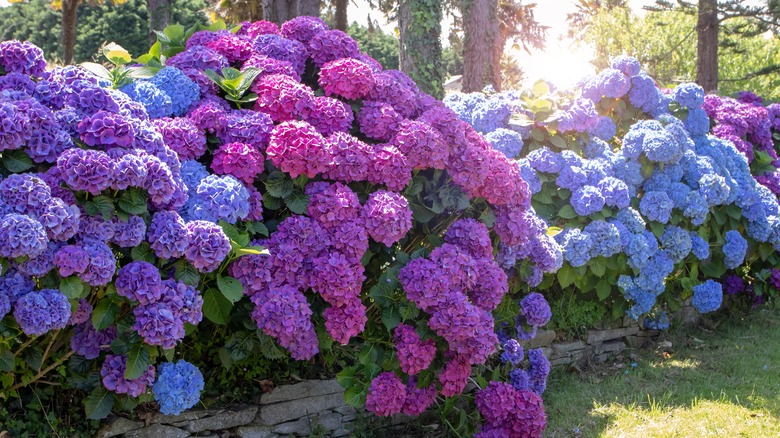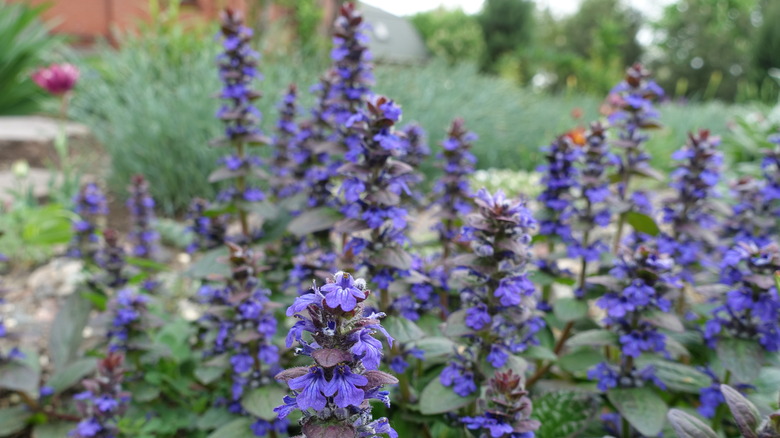The Reliable Ground Cover That Fills The Space Under Hydrangea Shrubs Beautifully
The showy flowers of hydrangea (Hydrangea spp.), a bush hardy in USDA Plant Hardiness Zones 3 through 9, bloom pink or blue depending on the amount of aluminum available to the plant. Generally, acidic soil produces blue blooms while alkaline soil causes pink flowers. Hydrangeas can grow as much as 12 feet tall, shading the ground underneath them and making it hard for anything but weeds to grow. A complementary ground cover to consider is ajuga (Ajuga reptans), commonly called bugleweed. It thrives in shady areas where grass won't grow and, once established, develops into a dense mat that keeps weeds at bay.
A note of caution: Ajuga grows aggressively and can take over lawns. It is listed as an invasive plant and should not be grown in Washington, Oregon, West Virginia, and Maryland. If you're unsure about growing it in your area, contact your local extension service.
Bugleweed, a creeping perennial hardy in zones 3 through 10, has glossy leaves in colors ranging from green to purple that form a rosette close to the ground. Purplish blue tubular flowers grow along 4 to 6-inch spikes and blossom in spring and summer. Ajuga with pink and white flowers are also available, but they may be less vigorous. Among the 40 cultivars that are widely available, the variety 'Atropurpurea' is frequently chosen for gardens because the leaves are purplish rather than green, adding interest to the ground cover. Other varieties like 'Silver Beauty' and 'Burgundy Glow' have variegated leaves with pink and white highlights. Before you plant, take into account the common mistakes to avoid when growing ground cover plants.
Ajuga as a ground cover
Ajuga prefers partial or full shade, but it can take a little sun if it gets enough water. It will grow in poor soil if it's well-drained and tolerates high temperatures if the humidity is in the low to moderate range. While ajuga is not terribly picky about soil types, it does prefer acidity. Ajuga is drought tolerant, so it shouldn't need irrigation beyond your normal watering schedule. Follow the three-second rule to take the guesswork out of watering plants. Propagate by division or cuttings, and deadhead the flowers after they've bloomed to prevent spreading seeds to other parts of the landscape.
The fungus that causes crown rot is a problem in very humid areas like the southeastern U.S. and in areas with heavy, poorly drained soil. Ajuga can wilt, yellow, and rot in those conditions. The microorganisms that cause crown rot live in the soil, so affected plants must be dug up and the soil replaced if you want to continue to grow bugleweed in that spot.
In addition to its value to pollinators like bees and butterflies, and in weed control, bugleweed is not attractive to deer. Unfortunately, deer find hydrangea quite tasty. If you live in an area where deer are a problem, you'll need fencing or other deer repellents to protect the bushes. Aphids, a pest sometimes called plant lice, can be rid of by spraying the plants with a stream of water. You could also introduce parasitic wasps to help control your aphid problem.

